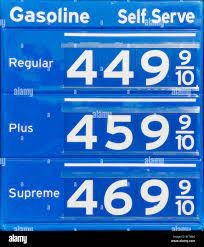
I. CEO Message
II. HR Message
III. Industry Update
IV. Cochise Introduction
V. Employee Spotlights
VI. Heat Safety Minute
VII. Construction Corner
VIII. West Region Update
IX. Service Message
X. Customer Spotlights
Industry Update – Bill Reichold
Since the price of gas continues to be in the news I thought that I would stick with that topic again for this newsletter.
Did you ever wonder why the price of a gallon of gas always ends in 9/10 of a cent? No other retailers advertise their prices in fractions of a cent. Pennies are so worthless these days that people even throw them away or leave them on checkout counters rather than keep them in their pockets. It may seem unusual, or even unnecessary, but there is a long history — and a subtle marketing strategy — behind gas prices ending in 9/10 of a cent.
Fractional prices first appeared in the early 1900’s as states began implementing sales taxes on gas to help build and maintain highways.
At the time, the taxes were levied in tenths of a cent and gas stations passed them on directly to drivers. But why not just charge a full cent? Well, at that time, the average cost of gas was around 10 cents a gallon. So adding a cent was a big deal, especially for drivers strapped for cash during the Great Depression. Instead of rounding up, which would have equated to a 10% increase, gas stations added the fraction of a cent instead.

By the 1950s, as the interstate highway system developed and gas stations began advertising their prices on big boards, most stations had moved to ending prices in 9/10 of cent, rather than a smaller fraction as a way to maximize sales.
But pricing ending in 99 cents is also a marketing strategy known as “just-below pricing”. It’s a common marketing tool used to make consumers feel like they’re getting a deal. There have been occasional attempts to end fractional pricing for gas. In 1985, Iowa outlawed the practice. “We don’t have a one-tenth of a coin,” an Iowa state senator reportedly said at the time. “It just bugged me for years.” In 1989, however, the state repealed the law and most stations returned to fractional pricing.
*From an article published by Nathaniel Meyersohn, of CNN Business. June 14, 2022
